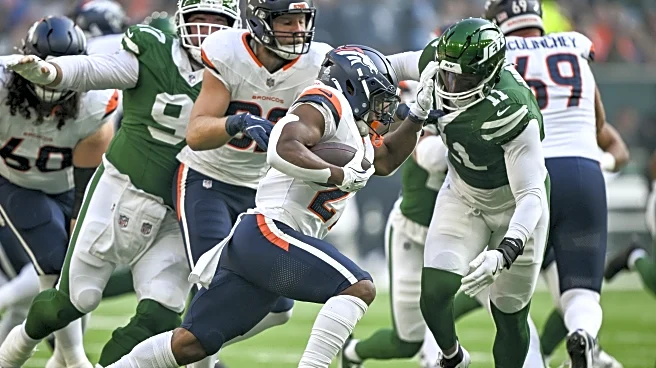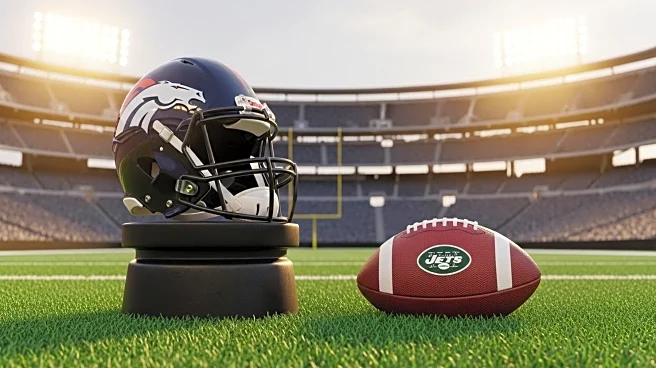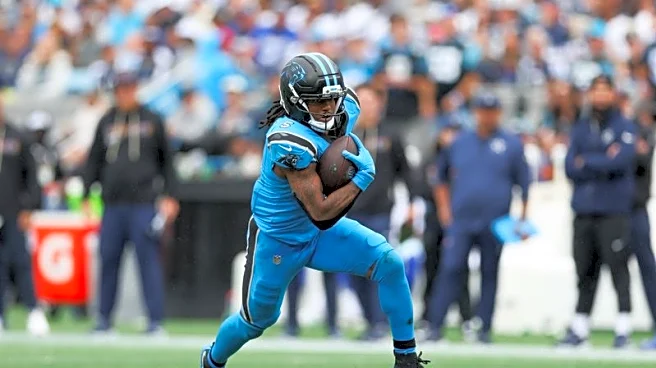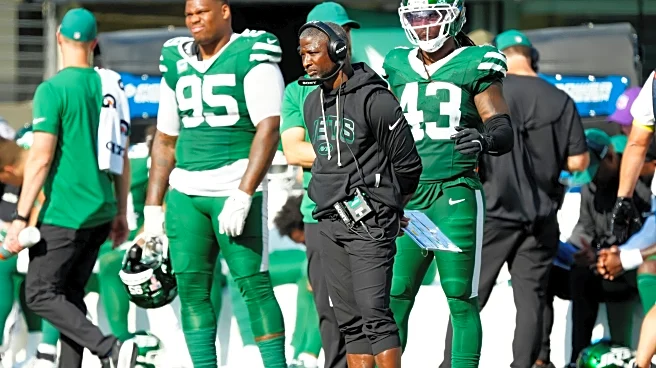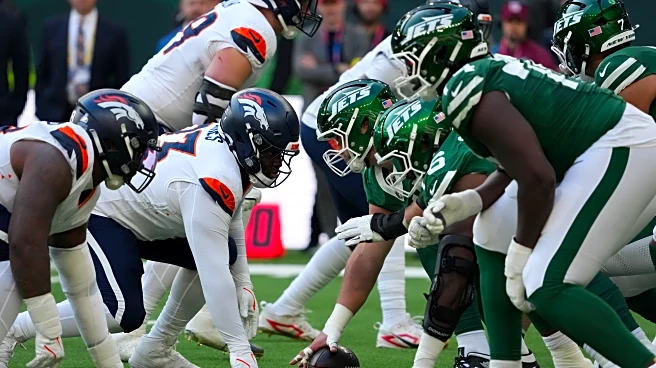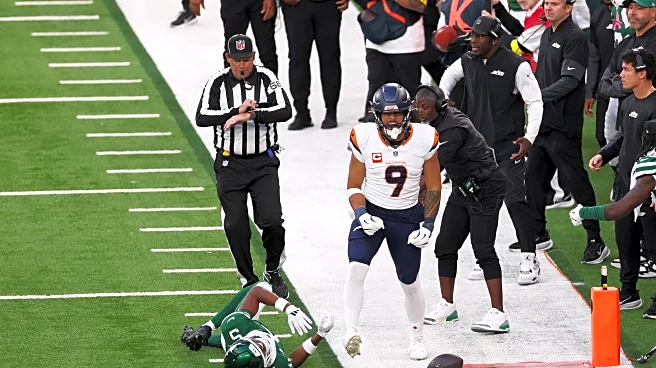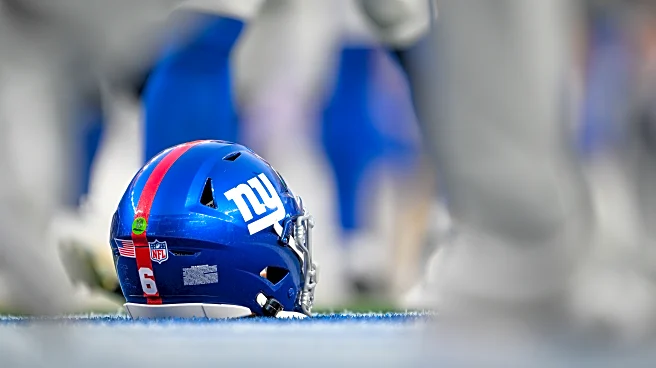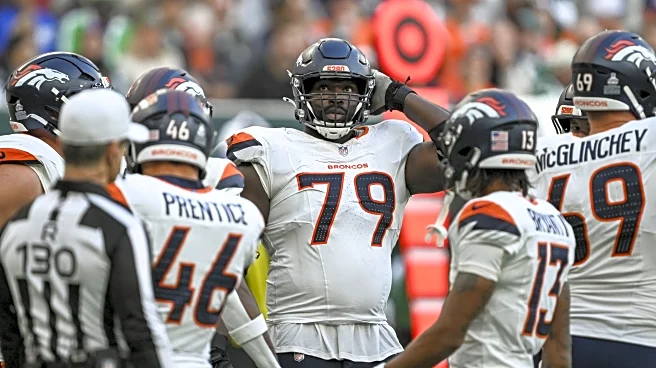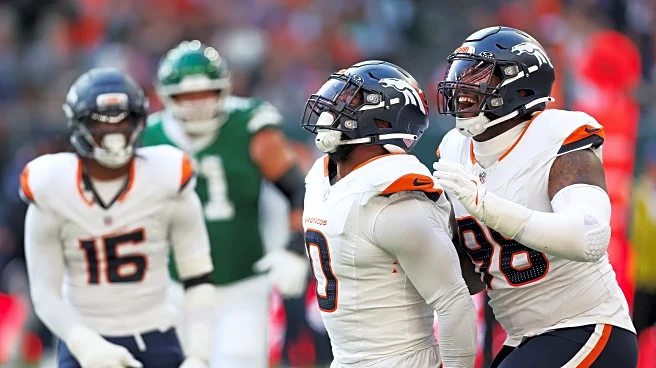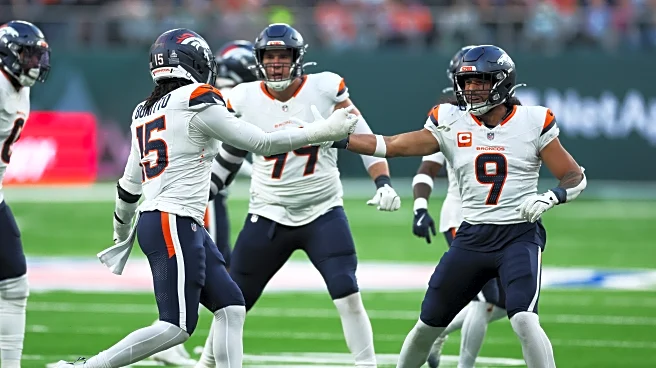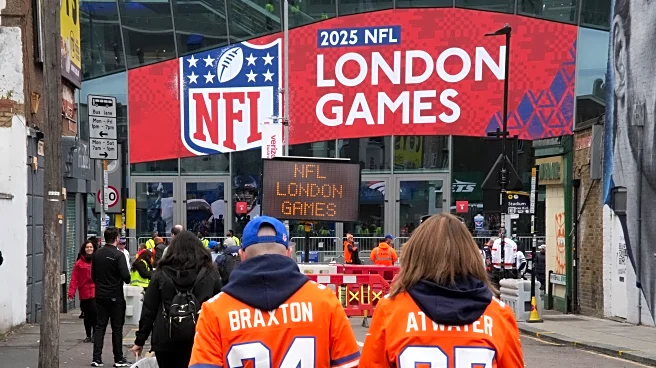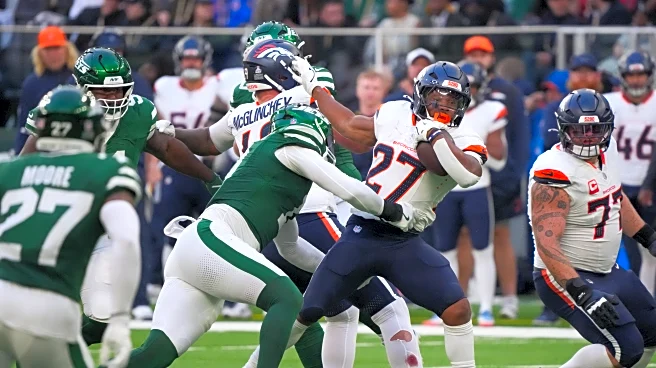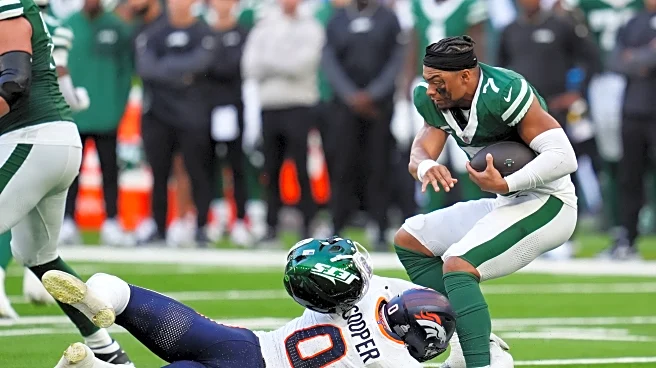Welcome back to another team-focused film review. Obviously the low hanging fruit this week would have been to review Matt Peart’s first game in replacement of the injured Ben Powers, but I won’t insult your intelligence. I trust that all of you know he got a 0.0% according to the RGS and we do not need to speak of him further, besides celebrating when he gets replaced (bumping Wattenberg, or starting Throckmorton or Palczewski).
I saw many people mentioning their frustration with Sean Payton’s play
calling on Sunday (which is deserved, but he’s usually good), and specifically people were confused about why he was so committed to the run game in the second half, rather than having Bo Nix continue to deal like he did in the first half. So that’s why I’ve complied every designed run that wasn’t RPO’d so we can see if we can get to the bottom of this.
I’ll try to answer three questions: why did Payton stick with the run game, what was working for the Denver Broncos, and what lead to their inability to run the ball well, in either half?
Stat crunch
Game summary
The Broncos ran the ball 22 times (designed run plays that weren’t RPO’d) for 60 yards (2.7 YPC). They gave their backs 20 yards before contact (0.9 YBCPC). Four of their 22 rushes went for no gain and one went for a loss.
JK Dobbins got the majority of carries with 14, but Payton did spread the ball around. RJ Harvey got a pair while Jaleel McLaughlin, Evan Engram, Marvin Mims, Troy Franklin, Bo Nix, and Adam Prentice all got one carry.
The Broncos mostly ran out of the Gun (eight rushes), gained 23 yards, and had the most yards per carry (2.9) with this formation. Singleback was their second-most used formation (seven rushes, 19 yards) with the I following in third (six rushes, 16 yards), and they ran one time out of the Pistol for two yards. Singleback and I both netted the same amount of yards per carry (2.7).
Like the rest of their games, Denver operated mostly out of their zone scheme, running Inside Zone 10 times and Outside Zone once. Their zone rushes netted them 34 yards (3.1 YPC) and four of these rushes went for five or more yards. Three of them went for no gain, however.
Other plays included Counter (two rushes), Toss (four rushes), Fly Sweep, Inside Trap, Draw, Power, and an End Around.
First half summary
The Broncos ran for 30 yards in the first half on 10 carries (three YPC) and gave their backs 16 yards before contact (1.6 YBCPC). Their best play was a gain of seven on the Fly Sweep by Evan Engram.
Only two of their rushes went for no gain, everything else was positive.
Their most popular formation was Singleback.
Second half summary
The Broncos also ran for 30 yards in the second half, but it was on 12 carries (2.5 YPC). The real difference was that they only gave their backs four yards before contact (0.3 YBCPC). Their worst rush of the game went for -2 yards on a Marvin Mims End Around, where he was hit seven yards deep in the backfield. It also featured their best rush of the game with an eight-yard gain by Dobbins on Outside Zone.
Three of their 12 rushes went for no gain, one went for a loss, and the rest were positive rushes.
Inside Zone was their most popular play, but this half did have the most variety among run plays.
Their most popular formation was Gun.
In general
While the run game wasn’t bad, it certainly wasn’t good. It felt like the entire game featured a good gain here and there, but they just couldn’t sustain anything on a given drive. And there’s a few reasons to blame here.
The most obvious reason is that Matt Peart did not belong on the field on Sunday. And while I do have to give him credit for playing 57 snaps on an injured knee, he struggled heavily in the run game. He was caught holding and he was simply getting beat off of the ball. His feet were slow and his technique was rough. Coming off of the bench against a defensive line that has Quinnen Williams and Harrison Phillips is far from an easy task, and it proved to be too much for Peart.
And it wasn’t just him. Of course Luke Wattenberg had his fair share of blown blocks, and even a guy like Quinn Meinerz made a handful of mistakes. The New York Jets have a solid defensive line and it showed.
Another thing that really hurt the Broncos is just how much the Jets liked to stack the box against them. Most of Denver’s run plays were against a seven or eight man box, and that’s a rough one to block. This may play into the fact that Payton’s play calling also was not the best in this one.
If the Jets are going to stack the box, you have a couple choices: spread them out or pass the ball. Considering the Broncos only had 11 passing attempts in the second half, the Jets had the ability to stack the box with little fear of Nix slinging the rock.
And Payton did not do a lot to widen out the defense to create rushing lanes. It would have been better for them to work out of 10 or 11 personnel and force the New York linebackers outside of the box to cover up the slot receiver(s). Instead, half of their rushes featured either two tight ends or two running backs. Their best rush, the Outside Zone, was ran out of 10 personnel. And while their offense did feature a good amount of pre-snap shifts, they were slow and drawn out. Perhaps spreading out the defense and quickly shifting into a tighter formation and then snapping the ball ASAP would’ve lead to a better numbers advantage.
And, FYI, running the ball really is all just a numbers game at the end of the day. It’s getting into a look that puts the defense in a numerical disadvantage through personnel and formations, and Payton has to set the Broncos up for success more often.
He was either too predictable with what he wanted to run, or he was outthinking himself by getting too cute (running a draw with your back up fullback on 3rd and long, for example). Payton needs to do a better job.
The Specifics
Singleback – 12 personnel – Fly Sweep – Gain of 7

One of the positives from this game is how much they were able to get Engram involved in this offense. It felt like him and Nix were finally starting to click. And in an unexpected manner, they also got him going in the run game. This Fly Sweep is blocked up well up front as the oline sells the Outside Zone to the right, freezing the DE. And Adam Trautman does a good job adjusting on his block to get a piece of that linebacker.
This is something defenses will have to practice for. And the possible wheel, or other routes, that can come off of this motion could go for chunk gains.
Singleback – 12 personnel – Inside Zone Read – Gain of 6

Before his back injury last year (I think specifically the Saints game was the last time they ran this), the Broncos were dangerous when they had Nix running the Read Option. He was consistently getting a solid gain or two a game and it kept the defense on their toes. Now they bust this one out against the Jets and Nix get’s one of their best gains of the game, and finishes it off by trucking a DB.
If they start reintegrating the Read Option into their run game, even if it’s just once or twice a game, then this is a great way to get an edge on opposing defenses.
Gun – 11 personnel – CT Counter – Gain of 0

This was absolutely Quinn Meinerz’ worst rep of the game, and one of his worst on the year, and it led to McLaughlin getting hit in the backfield, and it shows you just how important the playside down blocks are on Counter. Since he lunged and missed the DT, Garett Bolles gets stuck in the backfield and the play is DOA. At least Bolles tries to adjust and logs the DT to the inside, but there is now an unblocked LB. It would have been better for Wattenberg to get his eyes more inside and maybe pick up that LB, but that’s a tougher adjustment to have to make on the fly.
And you also have Peart on the backside making the same mistake as Quinn Meinerz does.
Gun – 10 personnel – Outside Zone – Gain of 8

Their biggest gain of the game comes off of good blocking and a great read by JK Dobbins. The Broncos are trying to hit the playside B gap on a play like this, and it might be there but Dobbins decides to cut it back and hit right behind Meinerz’ block on the LB.
Dobbins does a great job of anticipating what his blockers are going to do. Since Meinerz is out-leveraged on his backer, instead of trying to reach him and get to the playside, he makes the right decision to just wash him instead to open up the cutback lane, and Dobbins takes it. That’s a team that knows what each other is doing.
Gun – 11 personnel – Inside Zone – Gain of 0

Given the information I have on this play, I’m blaming Wattenberg for this run. He makes the wrong “Mike” call, which leaves the LB who makes the play unblocked. And on the longer cut of the film you see Bo Nix seemingly pointing at the LB while talking in Wattenberg’s direction.
On Inside Zone the Center should be making the “Mike” call (designating where the playside double team is going to) to the playside LB, and he’s mostly telling his Guard which linebacker to come off on. Everyone does their assignment up front, it just happens that they were given the wrong assignment by Wattenberg. Him and Meinerz should be working to #29, who’s playing in the box, and leave #51 for the backside double team for Peart and Bolles.
Gun – 12 personnel – Inside Zone – Gain of 6

We’ll end with what is one of their better runs on the day, but one that should’ve gone for a lot more. And funny enough I’m dealing with the same issue with the Tackles I coach at the high school level. On Inside Zone the playside Tackle has an iso block on the DE. Essentially he’s taking that DE wherever he wants to go. Washing him down if he goes inside and blocking him out if he declares to the outside. But what gets teams in trouble is when that DE plays it soft and tries to read the run, like what happens here, and the Tackle has his hips opened up to the defender.
The one place where the Tackle can’t get beat is to the inside. If the defender beats him to the outside, then all he has to do is chip him and there’s no way the DE makes the play. If the DE doesn’t declare a gap, then the Tackle has to work vertically through the inside shoulder of the DE while keeping his hips square to the line of scrimmage, which makes it hard of the DE to work back inside.
McGlinchey fails to do so here while Meinerz and Wattenberg do a pretty solid job on their double team. If McGlinchey takes that inside shoulder then Dobbins probably gets at least three more yards, of not more, on this rush.
Final thoughts
Overall, I think there is a lot of good to glean from what Denver put on the field on Sunday. It feels like the offense is still moving in the right direction. There are just some issues that they have to clean up, but those are manageable.
Denver won’t have to face off against one of the better run-stopping defensive lines in the league again, they won’t be playing in London again, and they should be able to make an instant improvement at the left guard position.
I also do like what Payton was attempting to scheme up here. Using Engram in the run game is a great way to get the ball in his hands more often. And I like having a guy like Mims in the backfield, but just not out of the Gun look. I like having him there in Split Gun and putting him on Orbit motions or little swing routes. That’s how he should be used when in the backfield. He should not be used like any other running back though.
As long as the Broncos are able to run a balanced offense, like they have been this year, that will open up the box a little for this run game to get going. Establishing the run is a fantastic thing, but sometimes you have to just take what the defense is giving you. And if they want to stack the box, start passing a little more, and then go right back to the run when they start having to defend the pass.
